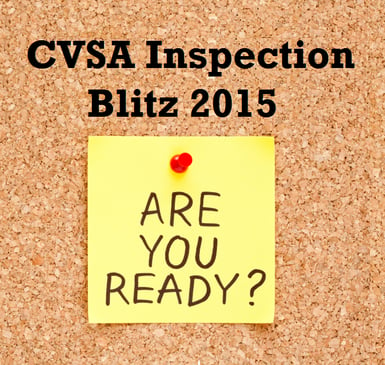DON JERRELL
Associate Vice President at HNI
It's almost that time of the year again. The Commercial Vehicle Safety Alliance's annual roadside inspection blitz is on the calendar for June 2-4.
CVSA's blitz is the largest targeted enforcement program worldwide that focuses on commercial motor vehicles. During this 3-day window, 17 trucks and buses will be inspected every minute across North America.
Every year, CVSA places a special emphasis on a particular category of violations. Last year's emphasis was on hazardous material, and this year, the area of main emphasis is cargo securement.
Why the Focus on Cargo Securement?
Cargo securement is a key element of safety, and should be included in every driver's pre-trip inspection. For some types of loads, federal regulations require the driver to stop within the first several miles of a trip and recheck the tie downs and load securement equipment.
Flatbed and hazmat carriers need to pay extra attention to their load securement, as this is the "hot-button" for inspectors this year. Take extra time to make sure your load is secured properly before you start out on your trip and (if feasible) check it regularly throughout your trip.
Have question? Here's a link to FMCSA's rules on load securement:
http://www.fmcsa.dot.gov/regulations/cargo-securement/drivers-handbook-cargo-securement-introduction
What Drivers Can Expect During the 2015 Roadside Inspection Blitz
The checks primarily will include North American Standard Level 1 inspections — the most thorough inspections of a truck driver and vehicle.
According to CVSA, drivers will be asked to provide their license, endorsements, medical card, and hours of service documentation. Drivers also will be checked for seat belt usage and for use of alcohol and controlled substances.
The vehicle inspection will include a check of the:
- braking system
- coupling devices
- exhaust system
- frame
- fuel system
- lights
- safe loading
- steering mechanism
- suspension
- tires
- van and open-top trailer bodies
- wheels and rims
- windshield wipers
- emergency exits (on buses)
Get Your Drivers Ready for a Roadside Inspection
Here are some best practices to make sure your drivers' truck inspections go as smoothly as possible:
- Pre-inspect the vehicle, including checking the load and mirrors.
- Minimize driving distractions, including phone use and a loud radio.
- Keep the logbook current and neat. Inspectors will want to see the last seven days of activity.
- Inspectors will want to check out a CDL, medical cards, trailer registration, and documents in a permit book. Make sure all paperwork is accurate and current.
- Remember that bad tires could trigger a more thorough inspection. And if a Level 1 inspection is completed, get a sticker for it.
- Avoid lapses in attention and poor judgment by getting enough rest. Sleep deprivation is a threat to safe driving.
- No attitude, please. A driver's best behavior during an inspection is always professional and courteous.
- Clue in your drivers on the most common violations: brakes out of adjustment, other brake problems, lights, tires and wheels, and cargo load securement. Other areas worth review include: coupling devices; fuel and exhaust systems; frame, van, and open-top trailers; steering; suspension; and rims and hubs.
All inspection violations become part of the CSA / SMS record.
Have any inspection tips to add? Please sound off in comments!
Related Posts:
Avoiding a Big Rear End: Collisions Come with Hefty Cost
GET OFF MY.... safe following distance
5 Things Drivers Never Should Do at the Scene of an Accident
Tracy Morgan Crash Shines Spotlight on Culture of Safety in Trucking
.png?width=69&height=53&name=Acrisure%20Logo%20(White%20Horizontal).png)

